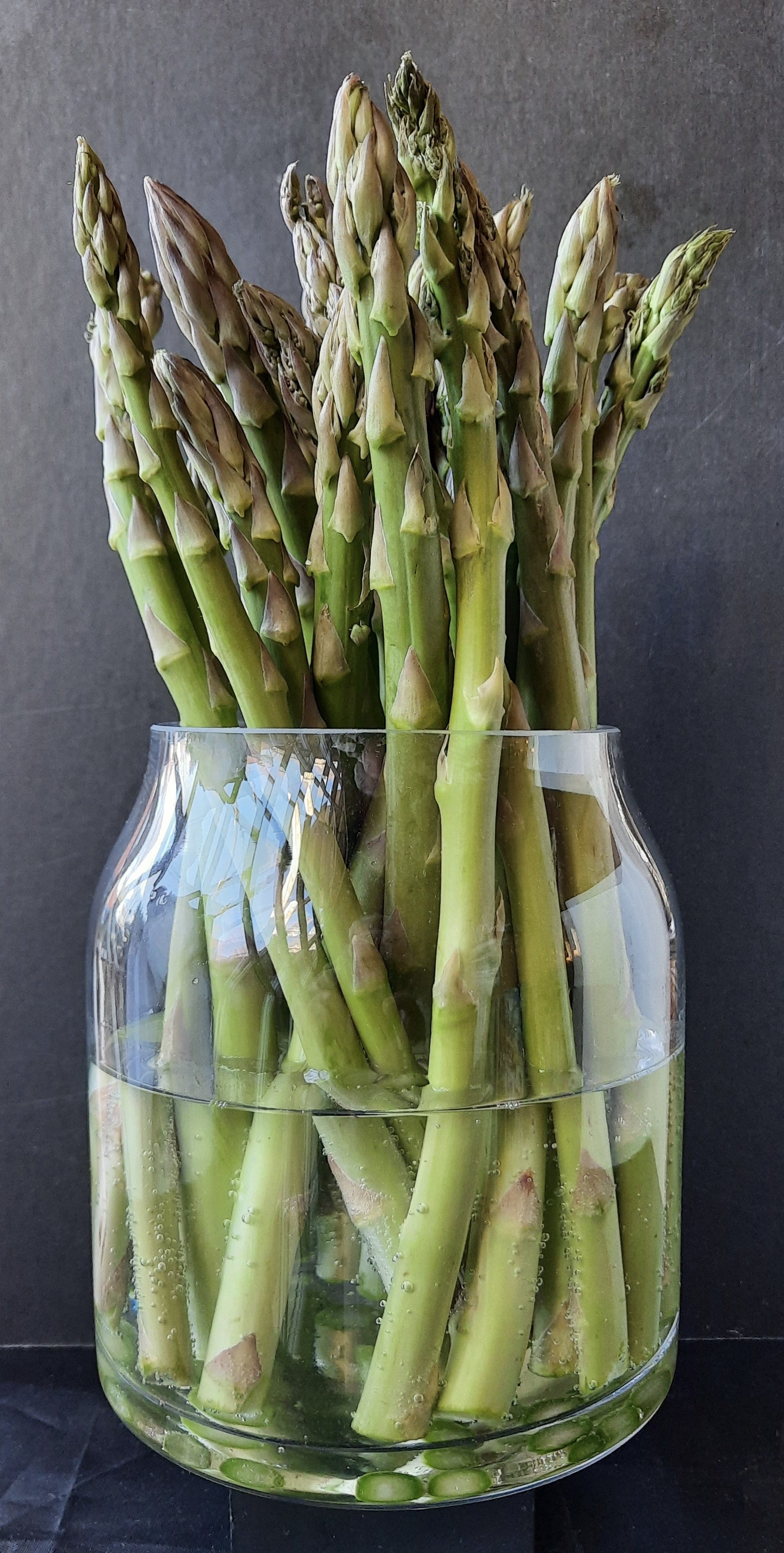ASPARAGUS, UM, TIPS
Everything basic to know about asparagus, plus links to some recipes that cook it.
Spring means asparagus and asparagus means spring. At the grocer’s, truly fresh asparagus appears still to be growing.
The diameter of asparagus signifies nothing other than the age of its mother crown, hidden below the surface of its protective and fecund soil and birthing its spears each year. If it is a young crown, the spears will be thin; if older, thicker.
All fresh asparagus, thick or thin, tastes the same.
The adage to “snap an asparagus spear where it naturally breaks” wastes an enormous amount of vegetable. It breaks where you place your fingers.
Treat each spear after getting to know it. Even thin spears might benefit from peeling, or thick be at their best from being left alone.
Refrigerate trimmed spears of asparagus in at least two inches of water. Treat them like freshly cut flowers; in a sense, that's what they are.
Always wash fresh spears of asparagus in a couple of changes of cool or cold water. Like leeks and some celery—and all cilantro, it forever seems—asparagus picks up grit as it pushes itself toward the sun and out of its bed of soil. The tips (especially if not as tightly closed as a child’s fist on candy) and the bracts along its shaft may harbor fine and not easily seen sand.
You may boil, broil, blanch, braise, steam, stir-fry, grill, roast or eat raw most asparagus and each method has its partisans.
Click here for a recipe page with “Five Ways to Cook Asparagus,” one of which is a risotto that uses its tender tips. (And here’s a video where I show you an easy way to make risottos of all kinds).
The beloved Southern cook, Edna Lewis, didn’t much snap off the ends of or peel her asparagus spears and wrote this recipe for “Skillet Asparagus” some months ago at Saveur magazine. It is as simple as it is delicious.
But if you are a snapper, here’s an idea of how to cook up all those stalk-ends rather than pitch them, a vichyssoise inspired by the chef Yotam Ottolenghi (and included in this piece I wrote a while ago about one of my favorite foods, Mustgos.
